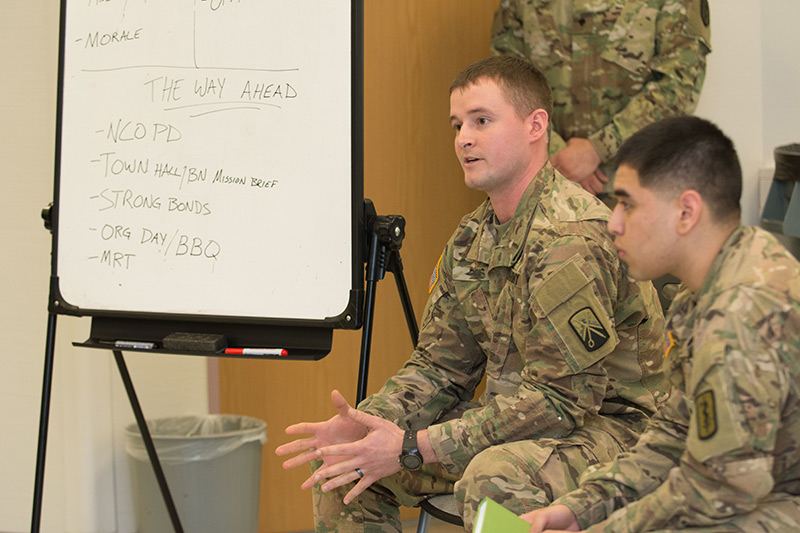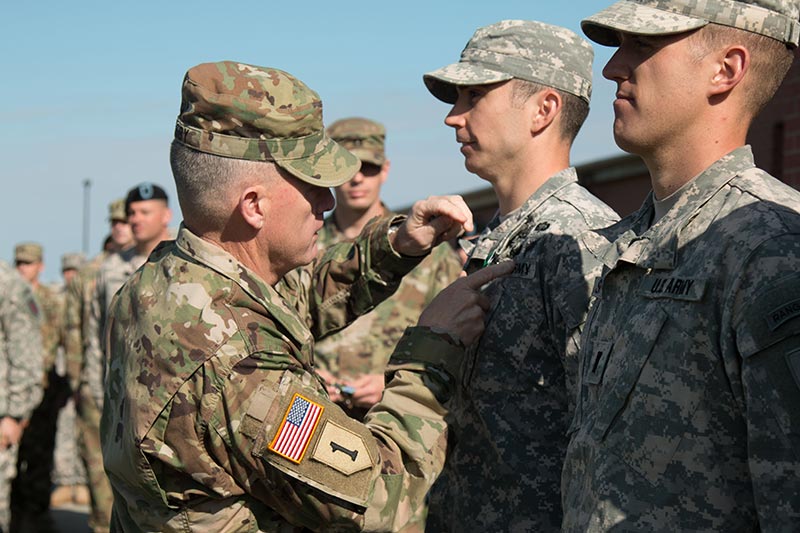Directly Address
Directly addressing counterproductive leadership is a strategy you can use to help modify a leaders’ behavior and prevent it from occurring in the future.
There are three techniques within the Directly Address strategy that you can use. Bear in mind that there are many factors that make directly addressing counterproductive leadership challenging. You’ll need to leverage your SABI analysis to help you determine when to apply each strategy and how best to mitigate potential unfavorable impacts.
Set Boundaries

Setting clear boundaries or “red lines” of what you consider “acceptable” or “unacceptable” behavior is critical when addressing leaders who use counterproductive leadership. It’s figuring out ahead of time, prior to a situation where a leader might exhibit counterproductive leadership, where you draw the line on what to allow. Identifying boundaries for yourself allows you to retain some mental and emotional control over inappropriate and/or threatening situations. Once you’ve identified your boundaries, it’s important to hold firm and be consistent with the limits you set.
Note, however, that this technique could involve considerable unfavorable impacts to you and others. The potential impacts will be greater the more sensitive the leader is and how directly you communicate the boundaries you’re setting. As you reflect on your situation, consider how you can best mitigate potential unfavorable impacts.
Decide on boundaries
As an Army professional, you have the right to be treated with respect. Some leaders may demonstrate behaviors that fall in a “grey area” between respect and outright disrespect. Decide what behaviors fall outside the Army’s definition of respect and what behaviors in the “grey area” you won’t accept or tolerate. This could be something you make explicit to the leader, or it could be a decision you make privately when deciding how to address the behavior.
Decide whether to make boundaries explicit
Depending on your situation, you may choose to make your boundary explicit by stating your boundary to the leader in question. Or you may choose NOT to directly state when your boundary has been crossed; you can instead treat the boundary as an internal condition that you use to guide how you react and conduct yourself (e.g., mentally distancing yourself, focusing on task-related thoughts, dismissing/not responding to the leader, changing the subject, emphasizing the positive).
Determine how to enforce your boundaries
Situations where your boundaries are crossed can often be emotional and stressful, and having your response prepared can help you react in a more productive and thoughtful manner. Responses may include breaking from the situation (e.g., physically or mentally distancing yourself from the leader), indirectly confronting (e.g., changing the subject during the conversation, calling the attention of bystanders to the inappropriate actions of the leader afterwards), or directly confronting (e.g., stating that you won’t accept specific behaviors). Alternatively, a crossed boundary may signal a time for you to reflect on the interaction and what your reaction will be in the future, instead of immediately confronting the leader.
De-escalate a Negative Exchange

Counterproductive leadership situations often result in intense emotions that escalate over time, and it’s easy to get caught up in them. To counteract this, you can use various techniques to interrupt and refocus the discussion to the work that needs to be done. As always, be mindful of potential unfavorable impacts that may arise when implementing these techniques.
Hit the “pause” button
Slow down the exchange by explicitly making a statement that redirects the conversation or just pausing and changing your delivery by speaking more concisely. For instance, you might state, “Hold on a second. Let’s pause and restart to see if we can get back on track. I want to make sure we can still deliver on [insert assignment/task/mission outcome that is important to the leader].”
This technique helps you and the leader take a step back from the emotions. It may seem like a small action, but it’s a powerful technique that creates a safe space and can help you proceed more logically. You can also anticipate and prepare to use this technique ahead of time based on your understanding of the particular leader’s triggers.
Use open-ended questions to prompt reflection
Open-ended questions can help the leader exhibiting counterproductive behaviors become more self-aware of his or her negative actions and their impact. Questioning allows you to explore assertions made by the leader, as well as your own assumptions about their intent. Questioning can also redirect any contentious discussion back to a common purpose, rather than focusing on disagreement or fault-finding.
Report to Others

Leaders have a responsibility to address counterproductive leadership and do what they can to repair its damage. However, in some situations, you may encounter behavior that is so severe it needs to be reported immediately. Conversely, you may have tried to address the behavior via other strategies, and the behaviors still aren’t changing. In both situations, you may consider reporting the concerns to others.
Escalate to more senior leaders
This technique may involve enlisting informal help from senior leaders inside or outside your unit (e.g., talking to them before or after PT). This is particularly useful if you think the leader’s behavior is unintentional or isn’t malicious, and you hypothesize that they may benefit from support from above in helping to change their behavior. In cases where the situation is more serious or you haven’t been successful with other techniques, consider using the chain of command and talking to your superior or your superior’s superior.
Use formal channels
You can use the following formal channels: Inspector General (IG) Complaint, Commander’s Inquiry and/or 15-6 Investigation, Equal Opportunity Complaint, and/or Article 138 Complaint.